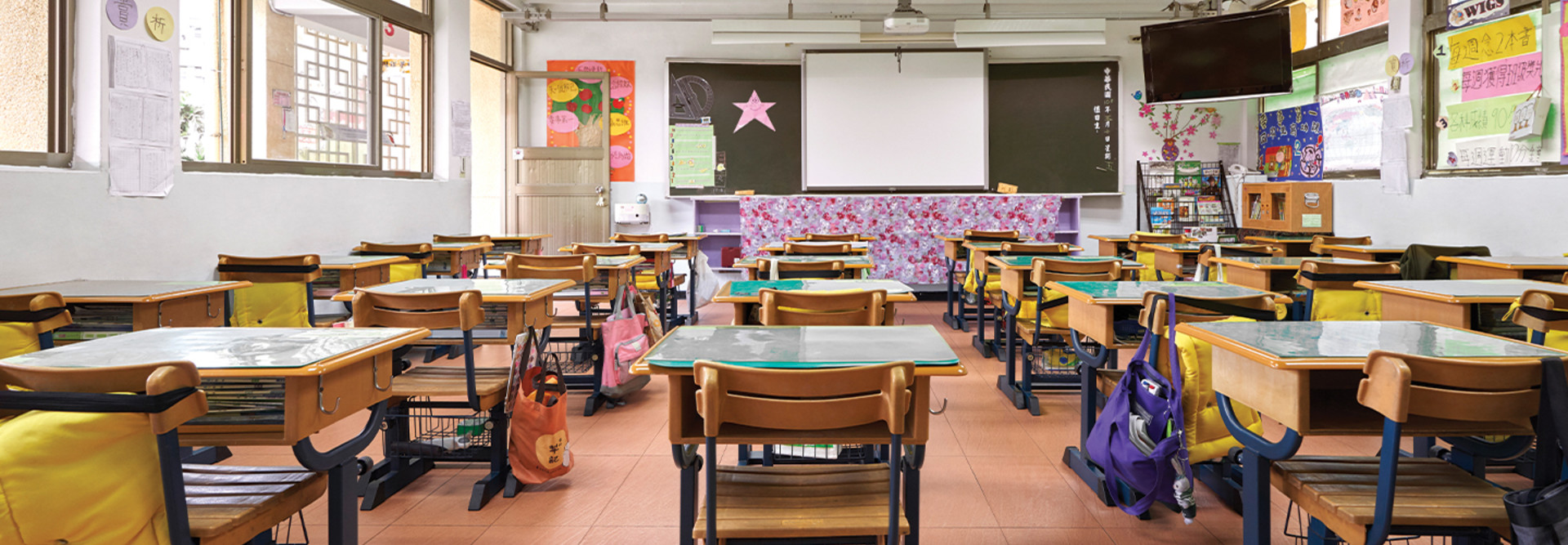1. Continue In-Person Classes with Safety Parameters
In this scenario, schools will resume traditional, in-person instruction with a regular schedule and calendar while following CDC guidelines for reopening, such as implementing daily temperature checks and directing staff and students over age 3 to wear masks.
While this scenario is easier to implement and supports parents with childcare, it might be difficult to maintain social distancing. Schools will need to consider installing desk partitions and mobile dividers in classrooms to promote safety, as well as audio enhancement solutions to ensure classroom communication is still clear and efficient despite the use of masks.
READ MORE: Discover what lessons district leaders learned when pivoting to remote instruction.
2. Adjust the Calendar Schedule to Meet Academic Needs
Modifying the academic calendar may involve adopting a later start date, adding extra days for rolling closures and even turning to year-round schooling.
This scenario gives administrators more time to address academic needs, which is even more crucial with the pandemic’s impact on student achievement and social-emotional wellness. It also builds in time for remediation and acceleration programs. However, students may be remote at different times of the year, so teachers should still be prepared for blended instruction.
3. Adopt a Hybrid Model to Make Social Distancing Easier
The hybrid model — or blended learning — is a combination of onsite and remote schooling. It may involve giving families the option to have students learn remotely or making some classes remote and others onsite, such as those that have a lab requirement.
Another way to implement this approach is by having remote instruction for high school students while placing middle school students in high schools and elementary students in middle schools. That way, they have more space to meet social distancing guidelines. Plus, students are still able to interact with an onsite teacher on face-to-face days.
Beyond setting up a blended-learning classroom, this model will also require school leaders to examine how it might affect educators’ workload since they’ll be teaching in two different modalities. They’ll also need to think about how to accommodate teachers who don’t feel safe returning to work or who have children who are also at home on a remote schedule.
MORE ON EDTECH: Find the right blended learning tool for your school.
4. Implement an Adjusted Schedule with Alternating Days
Creating an adjusted or flex schedule is another approach that can help reduce the number of students and staff on campus. It may involve having alternating days or weeks of onsite and remote learning or splitting the day for each type of instruction. Another option is to have teachers rotate through rooms, which limits contact in the hallways.
One key consideration for this approach is adjusting transportation or bus schedules to accommodate rotating students.
5. Return to a Fully Remote Environment
In this scenario, schools will continue operating in a remote environment, which also prepares them for a potential resurgence of coronavirus cases and emergency closures. If school leaders opt for this approach, they have the opportunity to use the remainder of the summer to plan and address identified issues from last spring, such as getting students online and providing adequate technology training for teachers. School leaders can also give teachers the option to work from home or their empty classroom.
However, districts must have the proper technical infrastructure to provide remote learning solutions at scale. They should also ensure that lessons are varied and of high quality to keep students engaged and meet learning standards. Additionally, they’ll need to consider how they’ll provide student support services in an online environment over an extended period of time.
LEARN MORE: Read what administrators are asking about remote learning.
Overall, no matter what scenario they end up choosing, school leaders must think critically about how their reopening plans will impact students and families from all the communities they serve. Now is the time to really be intentional in making learning authentic, engaging in empathy and sparking change in education.
This article is part of the “ConnectIT: Bridging the Gap Between Education and Technology” series. Please join the discussion on Twitter by using the #ConnectIT hashtag.







![[title]Connect IT: Bridging the Gap Between Education and Technology [title]Connect IT: Bridging the Gap Between Education and Technology](http://www.edtechmagazine.com/k12/sites/default/files/articles/2014/05/connectit.jpg)




